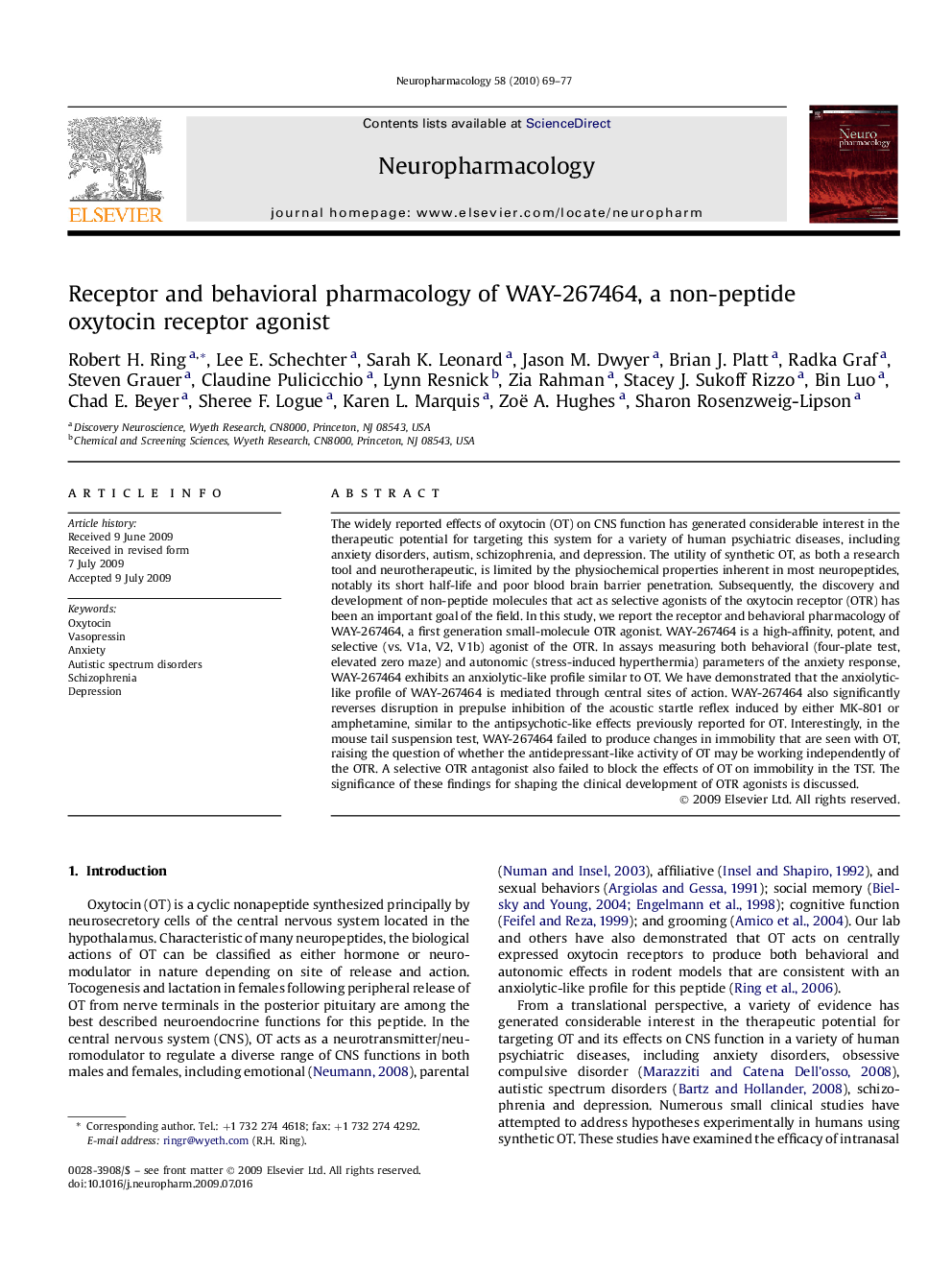| کد مقاله | کد نشریه | سال انتشار | مقاله انگلیسی | نسخه تمام متن |
|---|---|---|---|---|
| 2494172 | 1115549 | 2010 | 9 صفحه PDF | دانلود رایگان |

The widely reported effects of oxytocin (OT) on CNS function has generated considerable interest in the therapeutic potential for targeting this system for a variety of human psychiatric diseases, including anxiety disorders, autism, schizophrenia, and depression. The utility of synthetic OT, as both a research tool and neurotherapeutic, is limited by the physiochemical properties inherent in most neuropeptides, notably its short half-life and poor blood brain barrier penetration. Subsequently, the discovery and development of non-peptide molecules that act as selective agonists of the oxytocin receptor (OTR) has been an important goal of the field. In this study, we report the receptor and behavioral pharmacology of WAY-267464, a first generation small-molecule OTR agonist. WAY-267464 is a high-affinity, potent, and selective (vs. V1a, V2, V1b) agonist of the OTR. In assays measuring both behavioral (four-plate test, elevated zero maze) and autonomic (stress-induced hyperthermia) parameters of the anxiety response, WAY-267464 exhibits an anxiolytic-like profile similar to OT. We have demonstrated that the anxiolytic-like profile of WAY-267464 is mediated through central sites of action. WAY-267464 also significantly reverses disruption in prepulse inhibition of the acoustic startle reflex induced by either MK-801 or amphetamine, similar to the antipsychotic-like effects previously reported for OT. Interestingly, in the mouse tail suspension test, WAY-267464 failed to produce changes in immobility that are seen with OT, raising the question of whether the antidepressant-like activity of OT may be working independently of the OTR. A selective OTR antagonist also failed to block the effects of OT on immobility in the TST. The significance of these findings for shaping the clinical development of OTR agonists is discussed.
Journal: Neuropharmacology - Volume 58, Issue 1, January 2010, Pages 69–77